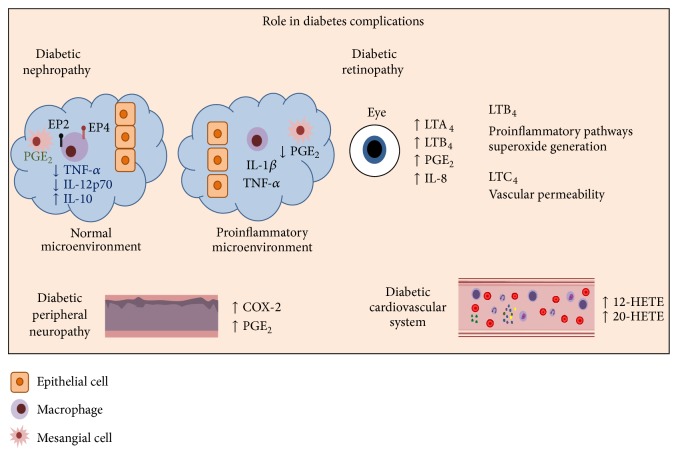Figure 2.
Eicosanoid compounds affect different organs in diabetes complications. Diabetic nephropathy, one of the most common complications in diabetes, shows low PGE2 levels and altered glomerular hemodynamics. This dilates arteries and increases microvascular permeability. In normal conditions PGE2 downregulates TNF-α production and upregulates IL-10 production through EP2 and EP4 receptor signaling. However, a proinflammatory environment leads to cell permeabilization, low concentrations of PGE2, and mesangial cell proliferation. Diabetic retinopathy is another common complication in diabetes. In diabetes, the environment in the retina has a particular lipid profile, with higher COX-2 and abnormal production of PG. LTA4 and LTB4 are enhanced in addition to IL-8. Diabetic peripheral neuropathy is correlated with high COX-2 and PGE2. In a diabetic's cardiovascular system, PGE2 has an important role in microvascular permeability, and 12-HETE and 20-HETE lower the activity of endothelial progenitor cell (EPC) function.

